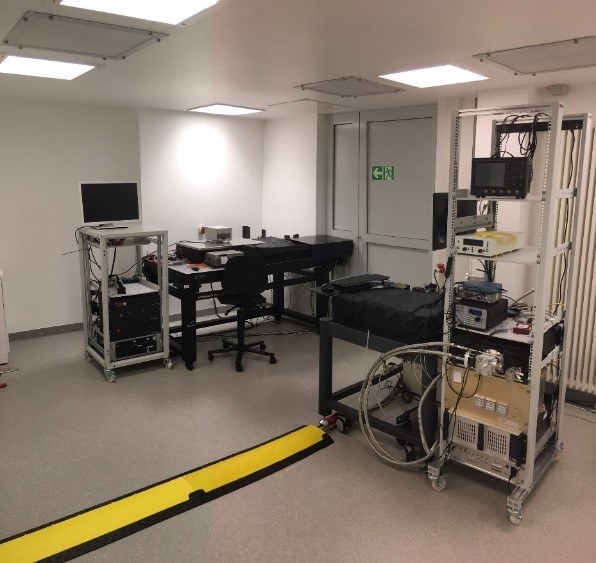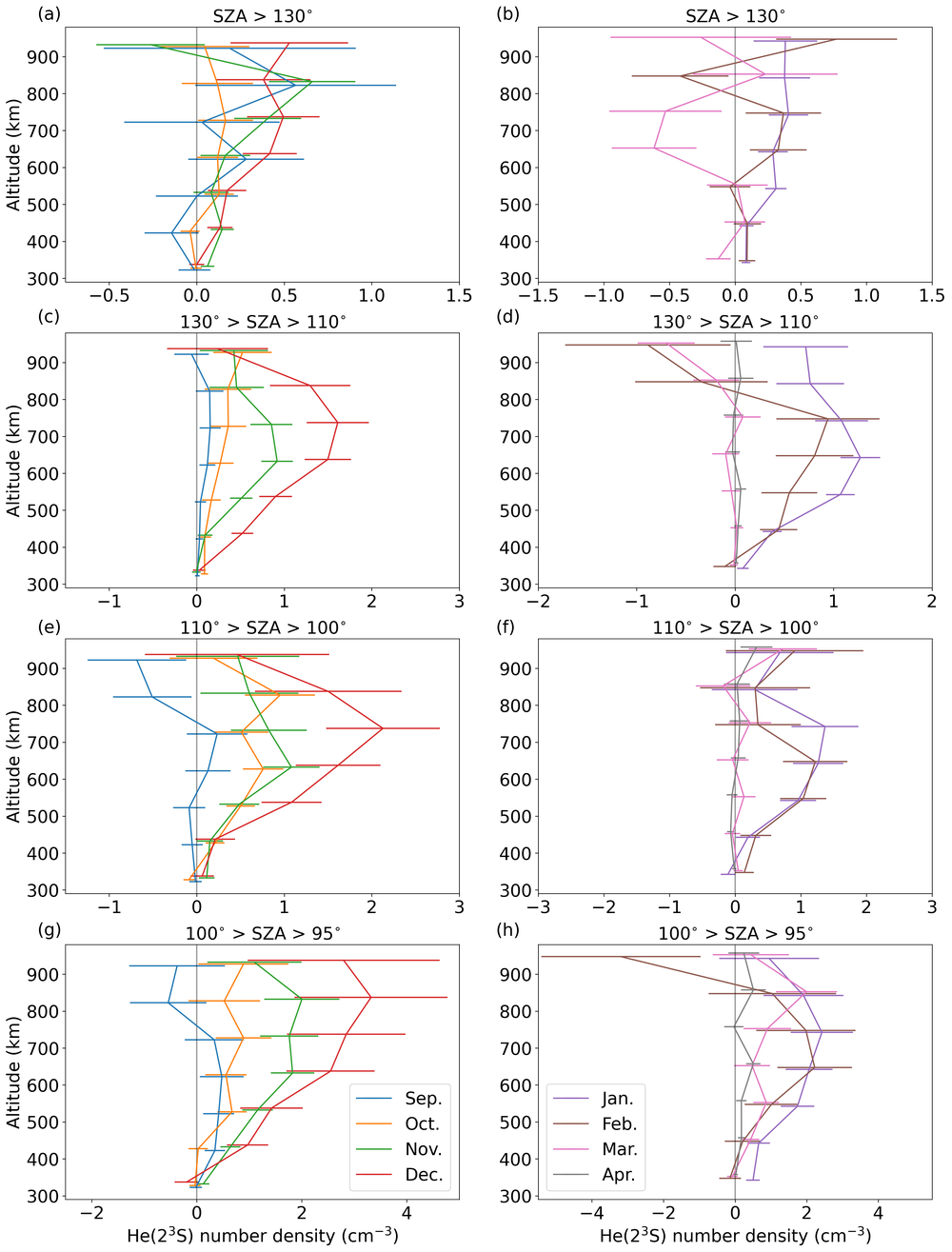Helium Lidar
HELIX, or the Helium Lidar Experiment, is a first-of-its-kind resonance lidar under development by the Institute for Solar-Terrestrial Physics, in collaboration with the Institute for Physics of the Atmosphere at DLR-Oberpfaffenhofen. The instrument consists primarily of a pulsed infrared laser aligned almost co-axially with a 700 mm telescope (see figure).
Backscattered light from the laser pulses are coupled from the telescope via an optical fiber into a superconducting nanowire single photon detector, where arriving photons are precisely timestamped. Since time-of-flight is proportional to scattering height, a height-resolved backscatter profile can be derived. In the lower atmosphere, the primary backscatter mechanism is Rayleigh scattering, but above 100 km this contributes negligibly to the return signal. In order to probe higher into the atmosphere, the laser is precisely tuned to the resonance line of metastable helium, which exists in a broad layer between 250 and 1000+ km.
The first measurements with HELIX were made in the winter of 2021-2022, resulting in the highest-yet atmospheric lidar measurements. These initial measurements confirmed the presence of metastable helium and demonstrated the potential of a helium resonance lidar. Since then, the system performance has been steadily improved, and, in January 2024, the system was operated in a multi-frequency mode to obtain wind and temperature measurements. The associated uncertainties were large, but this serves as a proof-of-concept for a future, more powerful instrument.



